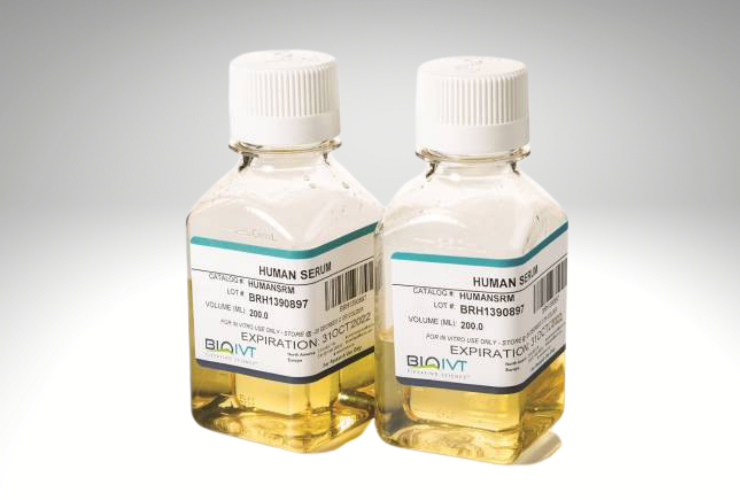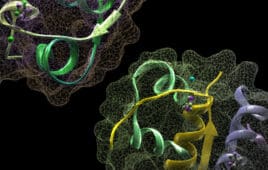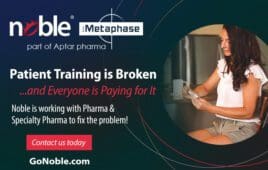
By Trevor Smith, MS MBA, Product Manager, Immune Cells
Human AB Serum is a staple in the biological research field, providing nutrients, vitamins and necessary growth factors in cellular culture and reliable controls in in vitro diagnostics. To truly understand serum, it is important to learn about its different production and processing methods.
Starting material for Human AB Serum is collected from healthy male donors with an AB blood type. A single gendered pool is used to reduce variation in the final product. The AB blood type means that donors have both A and B antigens on their red blood cells and therefore lack blood group antibodies. This guarantees that the serum will not react with other blood types, further minimizing immunoreactivity for researchers. Typical lots of Human AB Serum are produced from 150-250 donors and pooled together, but custom batches with fewer donors are available. BioIVT can produce Human AB Serum lots of less than 10 individual donors or generate single-donor lots.
Human AB Serum can be produced through two different methods: plasma-derived and off-the-clot.
Plasma-derived Human AB Serum is, as the name implies, generated from donor source plasma. Plasma is converted into serum by the defibrination process. Defibrination is typically achieved chemically using thrombin from either a human or bovine source to convert fibrogen into fibrin, thus turning the plasma into serum.
Off-the-clot Human AB Serum is produced from donor whole blood, wherein the blood is allowed to clot naturally, and the serum is extracted from the resultant fractionation. This allows the product to retain various growth factors and compounds found in whole blood without additional processing compounds, making it the closest thing to normal human material.
It’s important to note that off-the-clot serum is produced with more donors per batch, making it a more challenging product to produce. Conversely, plasma-derived serum has a limited amount of donors and can be produced with recallable donors to improve its availability and manufacturing timelines.
From these starting points, Human AB Serum can be processed in the following ways:
Sterilization of Human AB Serum can be achieved through various means. Traditionally, the serum is sterile filtered using a 0.1 μm filter. Filter trains of various pore sizes can be used as well.
Human AB Serum can be further treated using gamma irradiation. This method specifically addresses viral inactivation, making the product more appropriate for the manufacturing of cell and gene therapies.
Heat inactivation disables complement activity in serum without affecting its growth factors. It is achieved by exposing the serum to high heat for 30 minutes, then allowing it to return to room temperature.
To guarantee product safety, each batch of BioIVT’s Human AB Serum is tested for the following viral pathogens:
- Hepatitis B – surface antigen and nucleic acid
- Hepatitis C – virus and nucleic acid
- Human Immunodeficiency Virus (HIV) 1 and 2 – virus and nucleic acid
- Syphilis
- West Nile Virus (WNV)
- Human T-cell Lymphotropic Virus (HTLV) I/II
- Chagas
Additional viral testing is available to meet regulatory standards.
Now that you know how Human AB Serum is produced, how can it be used for your research?
For cell culture, notably in the fields of cell and gene therapy, Human AB Serum is used as a supplement that’s rich with growth factors to improve expansion rates of therapeutic cell types. In manufacturing settings, it has been found to reduce the time required to reach the patient dose, providing better outcomes. This is especially critical in autologous therapies, where patient cells have usually been exposed to several rounds of chemotherapy, resulting in lower cellular division.
Wherever your research takes you, BioIVT has the custom solutions required to ELEVATE your science. See our product pages for plasma-derived and off-the-clot Human AB Serum and place your order today!
Sponsored content by BioIVT
Filed Under: Hematology, Sponsored Content





Tell Us What You Think!
You must be logged in to post a comment.